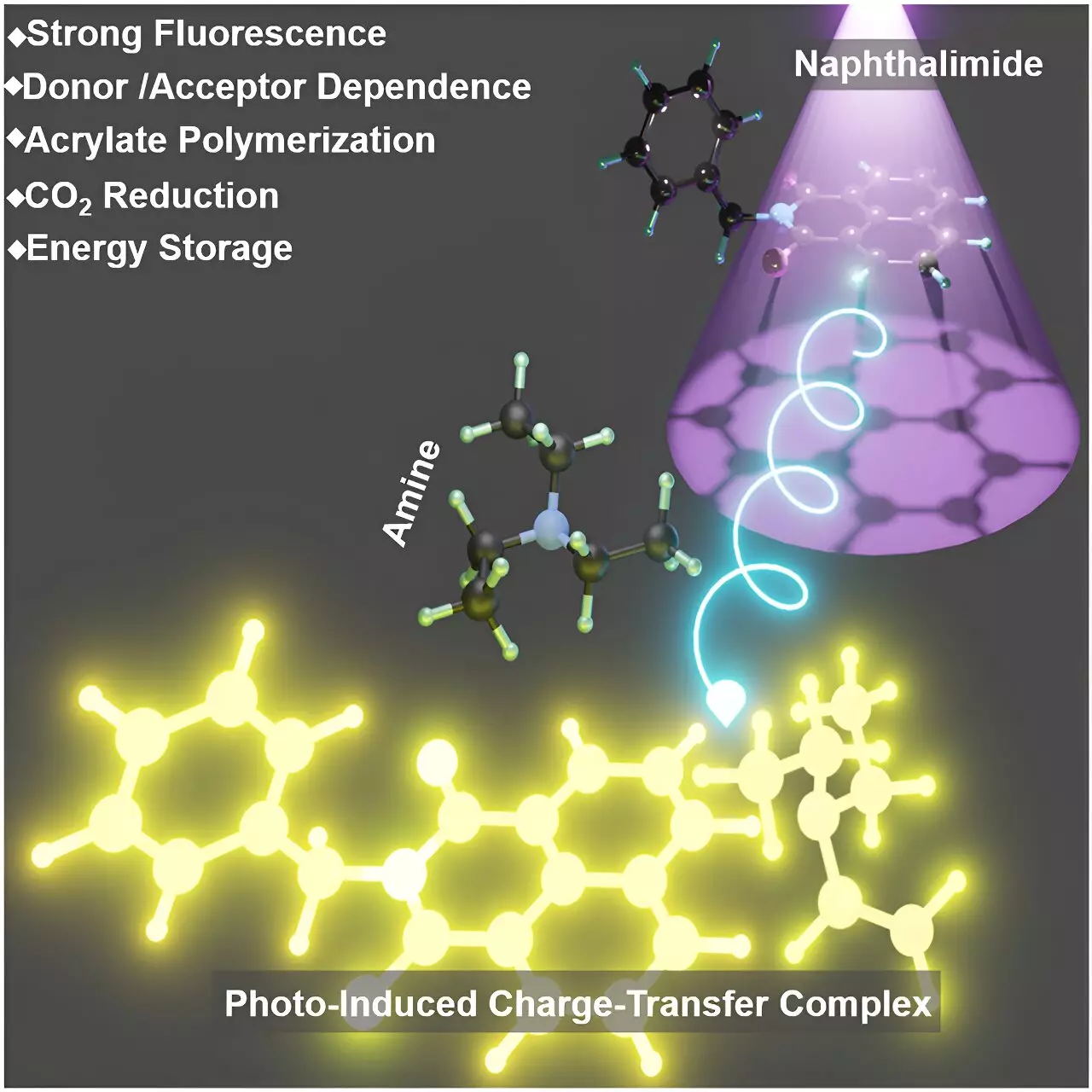Charge transfer between molecules is a crucial process in various natural and synthetic systems. It plays a fundamental role in essential processes like photosynthesis, respiration, organic synthesis, and energy conversion applications. Despite extensive research in this field, the creation of stable, light-responsive charge-transfer complexes in artificial systems has remained a significant challenge.
A research team led by Prof. Zhang Guoqing from USTC has made a groundbreaking discovery in this area. They have identified a highly reactive photo-induced charge-transfer complex (PCTC) between amine and imide. This complex offers new insights into complex photochemical processes and addresses the challenge of creating stable light-responsive charge-transfer complexes.
The researchers observed that aromatic imides and alkyl amines, which did not interact significantly in their ground state, formed stable PCTCs when exposed to UV light. This interaction resulted in a highly fluorescent complex resembling a Meisenheimer complex. Spectroscopic techniques such as high-resolution mass spectrometry and time-resolved spectroscopy confirmed the formation and stability of these complexes.
Further experiments revealed that the interaction between naphthalimide and triethylamine in solution led to the formation of the PCTC under UV irradiation. This complex not only showed efficacy in reducing carbon dioxide but also demonstrated the potential to initiate the polymerization of acrylic esters under UV light, creating new polymeric materials with unique properties.
One of the most intriguing applications of the PCTC is its ability to store UV energy and release it in the dark. This characteristic enables processes traditionally dependent on continuous light exposure to proceed in the absence of light. The discovery of highly reactive PCTCs between amines and imides under UV light not only enhances our understanding of photo-induced charge-transfer processes but also opens up new avenues for practical applications in polymer science, environmental technology, and energy storage.


Leave a Reply